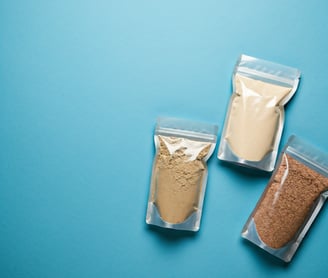Transforming Plant Protein Isolates via Microbial Action: Roquette’s Innovation
ALTERNATIVE PROTEINS


Protein is a cornerstone of human nutrition, contributing 12–20% of daily caloric intake. While animal-derived proteins dominate in industrialized nations, their overconsumption has been linked to significant health concerns, including cardiovascular diseases and cancer. Moreover, animal protein production carries a heavy environmental toll due to the impact of intensive farming. In response, the food industry has turned to plant-based alternatives, such as soy and pea proteins. However, these alternatives face their own challenges. Soy protein, for instance, relies heavily on genetically modified organisms (GMOs) and solvent-intensive extraction methods. Pea protein, while GMO-free, has limitations in its existing extraction processes.
Current methods for extracting high-purity plant proteins have significant drawbacks. Dry processes yield protein concentrates with suboptimal protein content (60–70%), while wet processes that rely on acid or heat treatments compromise molecular integrity, introduce unpleasant flavors, and require hazardous chemicals or expensive filtration techniques. These issues hinder the scalability, affordability, and sustainability of producing plant-based protein isolates that can meet both industrial and consumer expectations.
Roquette’s new patent application describes an innovation addressing these challenges by leveraging specific bacterial strains to streamline and improve plant protein extraction. This patent outlines a process that eliminates traditional acid or heat-based precipitation, resulting in a cleaner, safer, and more efficient way to produce high-quality plant protein isolates.
How It Works?
The process involves the following key steps:
Suspension Preparation: Vegetable flour (e.g., pea flour) is suspended in water.
Bacterial Strain Addition: Selected strains, such as Lactobacillus fermentum (CNCM I-5802), are introduced to the suspension. These strains rapidly acidify the medium without hydrolyzing or degrading the protein.
Incubation and Precipitation: The acidification triggers protein precipitation at optimal pH levels (4–5).
Separation and Processing: The precipitate is separated, pH-adjusted, heat-treated for stability, and dried to obtain a protein isolate with over 80% purity.
This approach offers several advantages. First, it is chemical-free, avoiding hazardous reagents like hydrochloric acid, which improves safety and reduces environmental impact. Second, the method enhances protein quality by preserving molecular integrity and minimizing the production of undesirable compounds, such as methanethiol and hexanal, which can affect taste and aroma. Third, it is cost-efficient, eliminating the need for expensive filtration technologies and lengthy fermentation processes. Finally, the process achieves high protein content, with purity levels reaching up to 95%, while maintaining the functional and nutritional properties of the protein.
The resulting protein isolate is versatile and suitable for various applications in the food, nutraceutical, and pharmaceutical industries. Its clean-label appeal and improved sensory properties make it particularly attractive to health-conscious consumers and brands focused on sustainability.
By optimizing both the extraction process and the end product, this approach not only makes high-quality plant proteins more accessible but also contributes to healthier diets and a more sustainable food system. This innovation can set new standards in plant-based nutrition, providing a cleaner, safer, and more efficient solution for the growing demand for alternative proteins.
